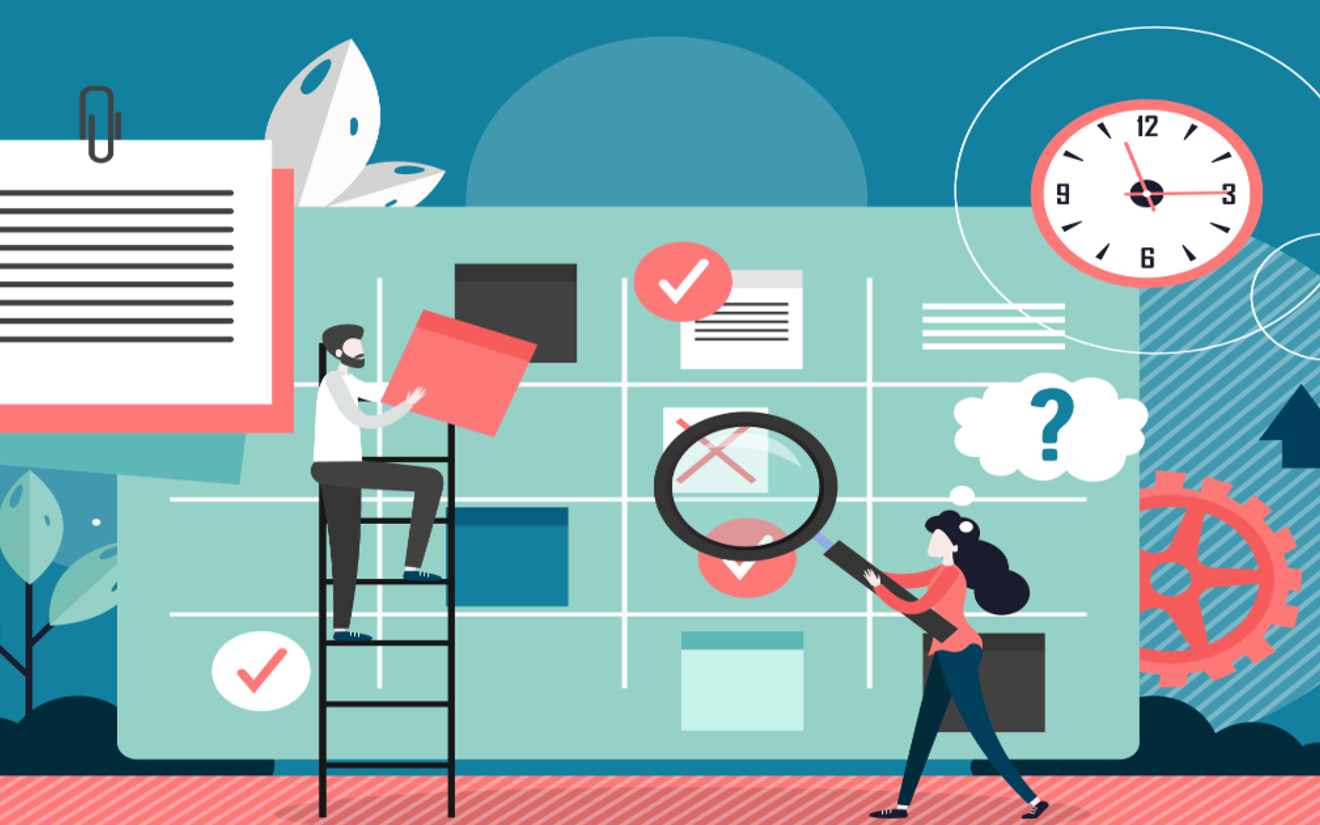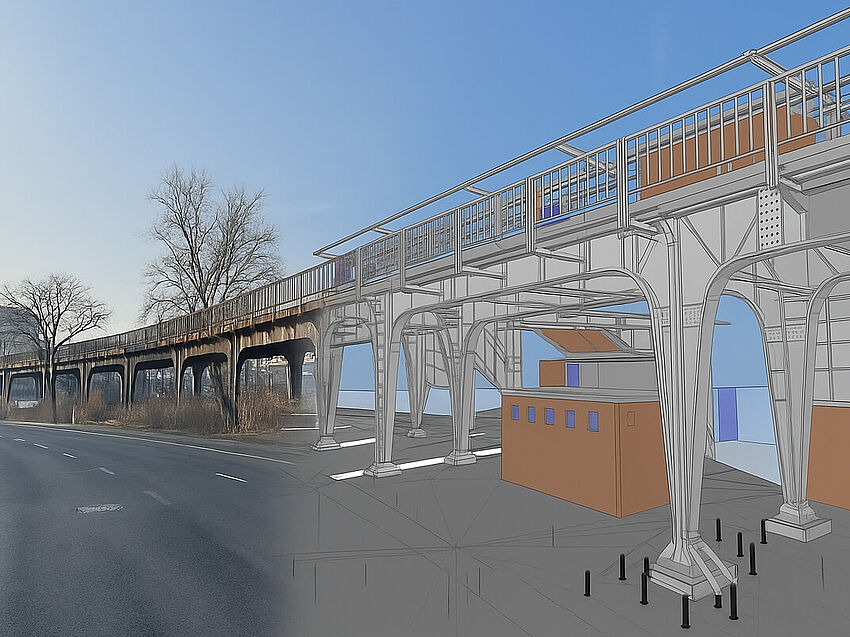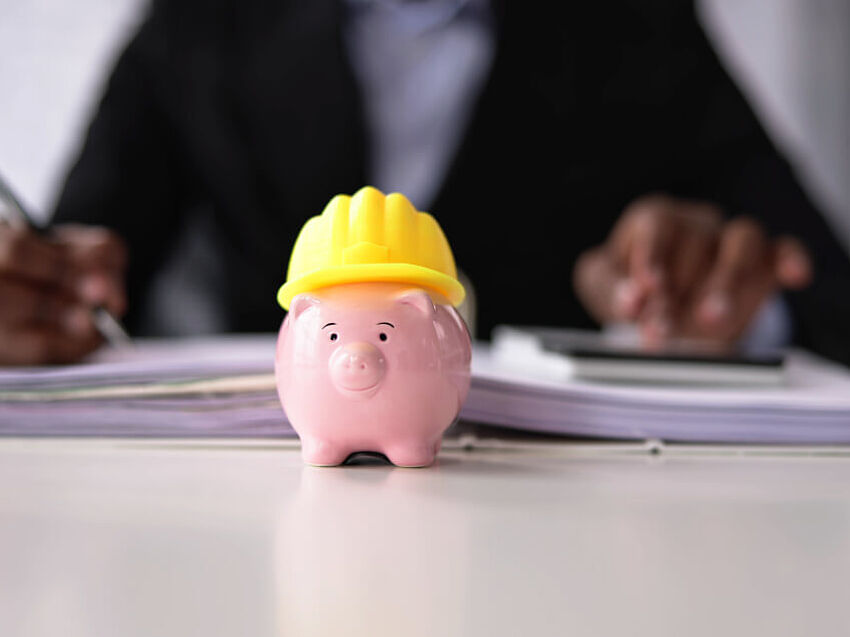Reactivation of the Siemensbahn: KREBS+KIEFER relies on ALLPLAN
In the first of two parts on Lean Construction and BIM, we explain what Lean is all about and why it pairs so well with BIM.
Starting point
Construction projects of a certain size are complex and, depending on the contract model, are designed and then built. A large number of players have to be coordinated in terms of content, quality, deadlines and costs and aligned with the project goals. Everything that is inadequately organized in this collaborative process ultimately leads to more risks - loss of time, higher costs or quality defects. Understandably, not only the client but also all project participants are interested in increasing efficiency and largely avoiding errors and problems. Two approaches that complement each other are ideally suited for achieving this common goal in the project: Lean Construction and BIM.
What is Lean Management?
Lean is the English word for "lean." The term goes back to a 1990 study by researchers at MIT, which looked at the differences in development and production conditions in the automotive industry. The authors summarized the principles they developed for a particularly efficient and qualitatively superior development and production system under the name Lean Production. These principles were generalized a short time later and applied to other industries under the term Lean Management. As the name suggests, lean management is no longer just about production, but about general management and organization. Accordingly, lean construction means lean planning and building.
What does lean mean here?
Why actually "lean"? The main focus in Lean Management as well as in its adaptation for the construction industry, Lean Construction, is on the general avoidance of waste, and that means: transparent and structured organization. In this context, all activities that do not contribute to the value creation of a product, i.e. do not increase its value from the customer's point of view, are considered (open or hidden) waste. These include: Multiple planning, overproduction, design errors and execution deficiencies, superfluous inventories, unnecessary work and routes, as well as waiting times and superfluous transport.
The five lean principles
The primary goal is to align processes in a way that eliminates all waste. Instead, an uninterrupted, continuous flow from the first to the last work step is strived for as the ideal, which yields a minimization of lead time. However, this is only one of a total of five basic principles that build on each other:
1. customer value: the process is always viewed from the customer's perspective. All activities are aligned with this. Changes to the process are only acceptable if added value is created from the customer's point of view. To ensure an optimal customer view, there must be permanent communication with the customer.
2. value stream: With this customer view, all existing process steps are considered and divided into value-adding or non-value-adding with regard to their contribution to the end product, i.e. the building. Value-adding steps add direct value to the building. Non-value-adding steps, on the other hand, do not add value and thus represent waste. These must be optimized or even eliminated. However, it should be noted that individual process steps may not be value-adding for the customer, but are necessary for the creation of the project.
3. flow: Unlike resource efficiency, where the goal is the efficient use of resources, flow efficiency focuses on the unit processed across the organization and seeks to optimize its relationship between value-added activities throughout their cycle time. Thus, the goal is not resource optimization, but process optimization. By ordering the value-adding work steps, this leads to an optimal process consistently oriented to customer benefit without interruptions.
4. pull: According to the pull principle, the manufacture or transport of a product is initiated as required by demand at the end of the process chain. A "pull" is created, whereby only what the customer needs is produced.
5. zero defect principle: By encouraging employees to question work processes and empowering them to identify waste in the process, the goal of continuous improvement is to be pursued and thus perfection is strived for.
Perfect pair: BIM and Lean Construction
Lean Construction and BIM are a perfect pair not only because they strive for the same goal, namely the optimization of design and construction processes. They are also complementary to each other. BIM actually provides the ideal foundation for a lean construction site. Planning based on a building model ensures precisely that - a reliable, largely error-free data situation which must necessarily underlie all further processes. The use of BIM models throughout the entire building life cycle prevents the repeated creation of the same information. Furthermore, 4D and 5D models make it possible, through reliable time and quantity calculations, to implement goals such as minimizing throughput time or achieving the highest possible flow efficiency, implementing the pull principle, and generally avoiding waste in planning. Conversely, lean management with its underlying process analyses (also outside of pure planning) offers the perfect prerequisite for successfully working with BIM.
In the second part, you will learn how BIM and Lean can be successfully implemented in practice.




